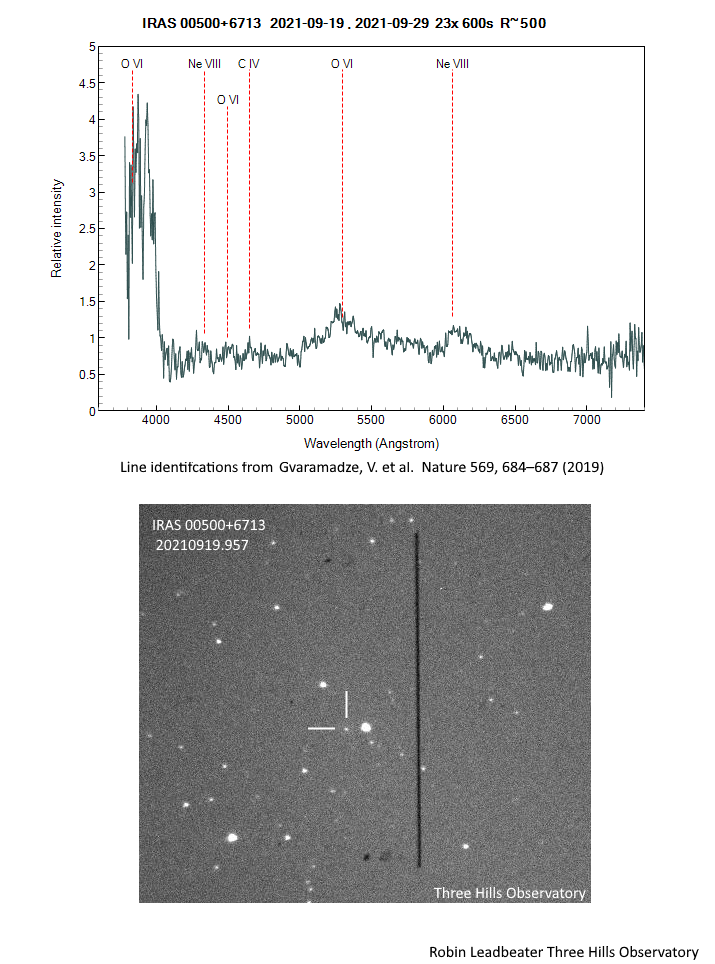IRAS 00500+6713 - The SN 1181 stellar remnant?
Embedded in what looks like a planetary nebula variously named Pa 30 or WS35 (Note this is not the star identified in SIMBAD as WS35!), this magnitude 15 star IRAS 00500+6713 in Cassiopeia is believed to be the result of a merger between two white dwarfs, kept from complete collapse by a powerful magnetic field (1). It has some extreme properties for a star by any measure. Its spectrum looks like that of an O type Wolf Rayet star with broad emission lines produced by high temperatures and powerful stellar winds but here these are off the WR star classification scale with a temperature of 200,000 K and a wind velocity of 16,000 km/s The O VI emission line at 3811/3834 Å is particularly strong, and so wide (FWHM ~300 Å ) that here it extends beyond the lowest wavelength limit of the spectrograph.
It has recently been proposed as the remnant of a supernova which was observed by Chinese astronomers in 1181 (2). (The study was prompted by a spectrum taken in 2018 by French amateur Pascal le Du). This would have been a type 1ax event, a supernova in which the merged white dwarf was not completely destroyed. Its final fate is debated. Some suggest it will undergo a second supernova event in the next few thousand years (1,2) while others predict it will remain as a cooling magnetic white dwarf (3)
1 1) Gvaramadze, V. et al.Nature569, 684–687 (2019) https://arxiv.org/abs/1904.00012
2 2) Andreas Ritter et al 2021 ApJL 918 L33 https://iopscience.iop.org/article/10.3847/2041-8213/ac2253
3. 3) Kazumi Kashiyama et al 2019 ApJ 887 39 https://iopscience.iop.org/article/10.3847/1538-4357/ab4e97


